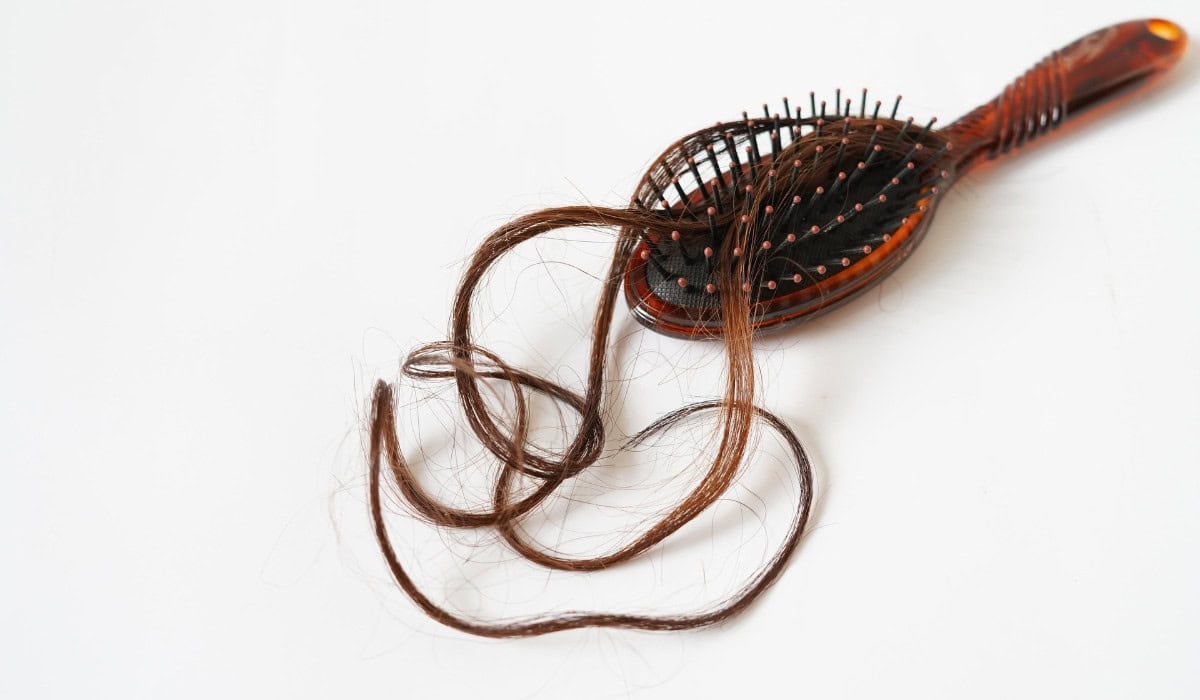A Comprehensive Overview – Understanding and Managing Alopecia
Hair loss can be a distressing experience, whether it’s a few extra strands in your brush or a noticeable thinning across your scalp. Experts like those from the J Am Acad Dermatol have studied various causes, from genetic factors to medical conditions. Shapiro J and Olsen EA have contributed significantly to our understanding, particularly in the realm of growth disorders and their impact on hair health.
Recognizing the signs and symptoms of hair loss is crucial. You might notice bald spots, a receding hairline, or even thinning in areas like your beard or eyebrows. These changes can happen quickly, sometimes in as little as 12 weeks. A scalp biopsy is often a key step in diagnosis, helping to identify the specific type of alopecia you’re dealing with.
Once a diagnosis is made, the focus shifts to treatment. For many types of hair loss, effective management requires treatment tailored to the individual’s condition. This might involve medication, lifestyle adjustments, or even devices like a cooling cap for those undergoing chemotherapy. The American Academy of Dermatology emphasizes the importance of early intervention to prevent further loss.
It’s also worth noting that not all hair loss is permanent. In cases like telogen effluvium, where the hair’s growth cycle is disrupted by stress or illness, recovery is possible without intensive treatment. However, understanding the underlying cause is essential to addressing the issue effectively and restoring hair health.
The Science of Hair: Growth, Loss, and Regeneration
Hair growth is a complex process that involves several stages, each crucial for maintaining a healthy head of hair. At any given time, each hair on your head is in one of these phases: growing, transitioning, resting, or shedding. This cycle ensures that hair growth and loss are balanced, keeping your hair density steady.
However, disruptions in this cycle can lead to hair loss. Factors like hormonal changes, such as those caused by birth control pills, can alter the growth phase, leading to shedding or thinning hair. Understanding this cycle is the first step towards addressing hair loss and exploring effective treatments to stimulate regrowth.
Physiology of Hair Growth
The physiology of hair growth is fascinating, involving a complex interplay of genetics, hormones, and environmental factors. Each hair follicle undergoes a cycle of growth, transition, and rest before the hair falls out and the cycle restarts. This continuous cycle is what keeps our hair renewing naturally over time.
However, when this cycle is disrupted, whether by disease, medication, or other factors, it can lead to various forms of hair loss. Recognizing the early signs of these disruptions can allow for timely interventions, potentially preserving hair density and preventing further loss.
The Lifecycle of Hair: Anagen, Catagen, Telogen, and Exogen Phases
The lifecycle of hair begins with the anagen phase, the period of active growth, which can last several years. Following this, the catagen phase is a short transitional period where the hair prepares to enter the resting phase. Next is the telogen phase, where the hair rests before it eventually sheds during the exogen phase. This cycle is a delicate balance, and when it’s disturbed, hair loss can occur.
Understanding the lifecycle of hair is crucial for diagnosing and treating different types of hair loss. For instance, conditions that shorten the growth phase or prolong the shedding phase can significantly affect hair density and health. By identifying which phase is affected, treatments can be more effectively targeted to encourage healthy hair growth and regeneration.
Classifying Alopecia: A Deep Dive into Types and Causes
Alopecia, or hair loss, is not a one-size-fits-all issue. It ranges from traction alopecia, caused by physical or emotional stress on the hair, to autoimmune diseases like alopecia totalis, which results in total hair loss. Other types include tinea capitis, a fungal infection, and various forms of scarring alopecia like lichen planopilaris and frontal fibrosing alopecia, which lead to permanent hair loss. Androgenic alopecia, commonly known as male or female pattern baldness, affects many men and women worldwide. These conditions underscore the importance of accurate diagnosis and tailored treatments.
Non-Scarring vs. Scarring Alopecia
Distinguishing between non-scarring and scarring alopecia is crucial for treatment. Non-scarring alopecias, like traction alopecia and alopecia totalis, do not destroy hair follicles and often have potential for hair to regrow. In contrast, scarring alopecias, such as folliculitis decalvans, lead to permanent hair loss due to the destruction of follicular openings, making early and effective intervention vital.
Understanding Non-Scarring Alopecia
Non-scarring alopecia encompasses a range of conditions that, while they do not permanently damage the hair follicles, can cause significant hair loss. Conditions like traction alopecia result from persistent pulling on the hair, while alopecia totalis involves the complete loss of scalp hair. Tinea capitis, a fungal infection, also falls into this category, alongside autoimmune diseases that can lead to sudden hair loss in patches. Fortunately, with proper diagnosis and treatment, many forms of non-scarring alopecia can be managed or even reversed.
Androgenic alopecia, another common form of non-scarring hair loss, affects both men and women and is characterized by a patterned thinning of the hair. Understanding the underlying causes of these conditions is the first step toward effective treatment, which may involve medication, lifestyle changes, or other interventions aimed at promoting hair regrowth and preventing further loss.
Insights into Scarring Alopecia
Scarring alopecia, such as lichen planopilaris, represents a group of conditions that cause permanent hair loss. These disorders lead to the destruction of hair follicles, replacing them with scar tissue. Early diagnosis and intervention are critical to halt the progression of the disease and preserve the remaining hair. Treatment options are limited and focus on preventing further hair follicle damage.
Understanding the causes and mechanisms behind scarring alopecia is essential for developing effective treatments. Research is ongoing to uncover new therapies that can address the underlying inflammation and prevent follicular destruction. For those affected, managing scarring alopecia requires a comprehensive approach, including medical treatment, support, and in some cases, surgical options to restore hair appearance.
Common Types of Non-Scarring Alopecia
Androgenetic Alopecia
Androgenetic alopecia, affecting both men and women, is the most common form of hair loss. In men, it manifests as a receding hairline and bald spots, while in women, it typically results in thinning hair across the scalp. The condition is largely genetic and involves the miniaturization of hair follicles in affected areas. Treatments focus on slowing hair loss and stimulating the anagen phase, or growth phase, of hair.
Recent advancements have introduced various treatment options, from topical applications approved by the Food and Drug Administration to innovative therapies like platelet-rich plasma (PRP). Understanding the genetic and hormonal factors at play can help in managing this condition, with early intervention offering the best chances for slowing the progression of hair loss.
Alopecia Areata
Alopecia areata is an autoimmune condition characterized by sudden bald patches on the scalp, beard, or eyebrows. These patches can vary in size and may grow back on their own or with treatment. The exact cause is unknown, but it’s thought to involve an immune attack on the hair follicles. Treatment aims to control the immune response and encourage hair regrowth.
Options include corticosteroid injections, topical treatments, and sometimes light therapy. While alopecia areata can be challenging to live with, many people find that their hair does regrow, and treatments can be quite effective in managing the condition. Support groups and counseling are also beneficial for coping with the psychological impact of the disorder.
Telogen Effluvium
Telogen effluvium is a form of hair loss characterized by widespread thinning of the hair, often resulting from significant stress, illness, or hormonal changes. The condition pushes more hairs into the telogen, or resting phase, leading to increased shedding and noticeable thinning. It’s usually temporary, with hair regrowth typically occurring within 6 to 9 months.
Diagnosing telogen effluvium involves examining the hair and, in some cases, a scalp biopsy. Treatment focuses on addressing the underlying cause, whether it’s nutritional deficiencies, stress management, or hormonal balance. With proper intervention, most individuals see a full recovery, highlighting the importance of early recognition and treatment.
Anagen Effluvium
Anagen Effluvium is a type of hair loss that happens very fast. It usually occurs after your scalp hairs are exposed to something harmful, like radiation therapy used to treat cancer. This type of treatment can harm the hair cells, making them too weak to hold onto the hair, which leads to hair falling out.
This condition mostly affects the scalp, but it can also cause hair loss on other parts of the body where hair grows quickly. The good news is that this kind of hair loss can get better once the treatment is over and the hair follicles start to heal. Over time, your hair can start to grow back, although it might look different in color or texture at first.
Traction Alopecia
Traction Alopecia happens when you put too much stress on your hair follicles by pulling your hair too tight. This can be caused by hairstyles like ponytails, braids, or dreadlocks that pull on the scalp. When hair is pulled tight often, it can damage the hair follicles and lead to hair loss.
To avoid this type of hair loss, try wearing your hair in loose styles that don’t pull on your scalp. If you notice that your hair is starting to thin or if you see bald spots, it might be a good idea to change your hairstyle. Letting your hair rest can sometimes help it start to grow back.
Exploring Scarring Alopecias
Scarring alopecias are a group of conditions that cause permanent hair loss. They happen when inflammation destroys the hair follicle, replacing it with scar tissue. Once the follicle is damaged in this way, it can’t grow hair again. Different types of scarring alopecia can have various causes, including autoimmune diseases, infections, or even physical damage to the scalp.
Lichen Planopilaris
Lichen Planopilaris is a type of scarring alopecia that causes inflammation and can lead to permanent hair loss. It often affects the scalp near the frontal hairline, making it a noticeable condition for those who have it. The exact cause is not known, but it’s thought to be related to the immune system attacking the hair follicles by mistake.
If you notice redness, itching, or hair loss around your frontal hairline, it’s important to see a doctor. Early treatment can help slow down the hair loss and might prevent further damage to your hair follicles. Treatments can include medications to reduce inflammation and help manage symptoms.
Central Centrifugal Cicatricial Alopecia
Central Centrifugal Cicatricial Alopecia (CCCA) is a condition that causes hair loss and scarring from the center of the scalp, spreading outward. It is more common in women, especially those of African descent. The cause of CCCA is not completely understood, but it’s thought that hairstyles that pull on the hair, heat damage, or chemical treatments might play a role.
If you’re experiencing hair loss that starts at the center of your scalp and moves outward, it’s a good idea to seek medical advice. Treating CCCA early can help prevent further hair loss and scarring. Treatments often focus on stopping the progression of the condition and might include topical or oral medications.
Chronic Cutaneous Lupus Erythematosus
Chronic Cutaneous Lupus Erythematosus, also known as Discoid Lupus Erythematosus, is an autoimmune condition that can cause scarring hair loss. It affects the skin, including the scalp, and can lead to red, scaly patches that eventually scar. These scars can damage the follicular orifices, where hair grows, leading to hair loss.
If you notice unusual red patches on your scalp that might be scaly or itchy, it’s important to see a healthcare provider. Early diagnosis and treatment can help manage the symptoms and possibly prevent hair loss. Treatment options can include creams, oral medications, or injections to help control the inflammation and protect your hair follicles.
Beyond Genetics: External Factors Contributing to Hair Loss
While genetics play a big role in hair loss, there are also many external factors that can contribute to thinning hair. Things like stress, diet, and how you take care of your hair can all affect your hair’s health. Understanding these factors can help you take steps to prevent hair loss or to deal with it if it’s already happening.
Stress-Induced Alopecia
Stress can have a big impact on your hair. When you’re going through a lot of stress, it can cause your hair to enter the resting phase of the hair growth cycle, leading to hair loss. This type of hair loss is usually temporary, and your hair might start growing back once the stress goes away.
To help manage stress-induced alopecia, try to find healthy ways to deal with stress. Activities like exercise, meditation, or talking to a friend can make a big difference. Remember, it’s also important to be patient as your hair starts to grow back. It can take time, but taking care of your overall health can help.
Nutritional Deficiencies and Hair Loss
What you eat plays a big role in the health of your hair. Not getting enough of certain nutrients, like vitamins and minerals, can lead to hair loss. For example, a zinc deficiency is known to cause hair to fall out. Making sure you’re eating a balanced diet can help keep your hair healthy.
The Role of Micronutrients in Hair Health
Micronutrients, like vitamins and minerals, are really important for your hair. They help with the growth and strength of your hair. For example, iron helps carry oxygen to your hair follicles, and zinc helps your hair grow and repair itself. Not getting enough of these nutrients can lead to hair loss.
To make sure you’re getting enough micronutrients, eat a variety of healthy foods. Foods like fruits, vegetables, lean proteins, and whole grains are all good choices. If you’re worried about not getting enough nutrients, talk to a doctor. They might suggest taking a supplement to help.
Mediterranean Diet as a Potential Treatment Approach
The Mediterranean diet is known for being really healthy, and it might also help with hair loss. This diet includes lots of fruits, vegetables, whole grains, and healthy fats, like olive oil. Eating this way can provide your body with the nutrients it needs for healthy hair.
Some studies suggest that following a Mediterranean diet can help reduce the risk of androgenetic alopecia, or pattern hair loss, in men and women. If you’re looking for a way to help your hair, trying this diet might be a good idea. Plus, it’s good for your overall health, too.
Endocrine Imbalances and Hair Loss
Endocrine imbalances, when your hormones are not in balance, can also cause hair loss. For example, conditions like thyroid disease can lead to thinning hair. Hormones play a big role in regulating the growth and rest cycles of your hair.
If you think a hormone imbalance might be causing your hair loss, it’s a good idea to see a doctor. They can do tests to check your hormone levels and suggest treatments to help balance them out. This can help your hair start to grow back.
The Immune System’s Role in Alopecia
Sometimes, the immune system can attack hair follicles, leading to hair loss. This is what happens in conditions like alopecia areata. The immune system sees the hair follicles as foreign and attacks them, causing hair to fall out.
If you’re losing hair in small patches, it might be due to an immune system reaction. Seeing a doctor can help you find out for sure. There are treatments that can help manage the condition and sometimes help your hair grow back. Working with your doctor is important to find the best treatment for you.
Diagnosis and Management of Hair Loss
When you notice your hair thinning or falling out, it’s crucial to understand the root cause. The diagnosis and management of hair loss involve a thorough evaluation, including a detailed medical history, physical examination, and specific blood tests. Identifying the underlying issue is the first step toward effective treatment and, hopefully, regrowth of hair.
Approach to the Patient
Approaching a patient with hair loss, particularly with concerns of female pattern alopecia, requires sensitivity and a comprehensive evaluation. Understanding the patient’s medical history, lifestyle, and psychological impact of hair loss sets the foundation for effective management strategies.
History and Physical Examination
Gathering a patient’s medical history is a critical first step in diagnosing hair loss. This includes asking about recent illnesses, medications, dietary habits, and family history of alopecia. The physical examination focuses on the scalp, looking for patterns of hair loss, and examining other areas of the body for related signs.
During the examination, the doctor will assess the affected areas, looking for signs of inflammation, scarring, or patterns that may indicate a specific type of alopecia. This comprehensive approach helps pinpoint the cause and guides the next steps in management.
Laboratory Studies and Their Significance
Blood tests play a significant role in diagnosing the cause of hair loss. They can reveal underlying conditions such as thyroid disease, iron deficiency, or signs of autoimmune disorders. Understanding these results, in conjunction with the patient’s history and physical examination findings, helps in forming a targeted treatment plan.
In some cases, additional tests may be recommended to further investigate the cause of hair loss. This could include a scalp biopsy or imaging studies to examine the hair follicles more closely. These laboratory studies are crucial in distinguishing between different types of alopecia and determining the best course of action.
Clinical Presentation and Management Strategies
For Androgenetic Alopecia
Androgenetic alopecia, commonly known as male or female pattern baldness, is characterized by a gradual thinning of hair in specific patterns. The anagen phase, or growth phase of hair, is shortened, leading to thinner, shorter hairs in the affected areas. Management strategies often include medications that target hormonal influences and promote hair growth, such as minoxidil and finasteride.
Considering lifestyle factors and potential risk factors is also essential. For example, Table 1 in a study might list genetic predispositions or hormonal imbalances as significant contributors. Treatments focus on prolonging the anagen phase and preventing further hair loss.
For Alopecia Areata
Alopecia areata presents as sudden bald patches on the scalp and sometimes other parts of the body. It’s an autoimmune condition where the immune system attacks hair follicles. Treatment options include corticosteroids to suppress the immune response and minoxidil to stimulate hair growth. Early intervention is crucial to manage this unpredictable condition effectively.
Counseling and support groups can also be beneficial, as the appearance of bald patches can significantly impact one’s self-esteem and psychological well-being. The goal is to encourage hair regrowth while managing the emotional aspects of the condition.
For Telogen Effluvium
Telogen effluvium is a form of hair loss characterized by an excessive number of scalp hairs entering the resting phase, leading to increased shedding. It’s often triggered by stress, significant life events, or severe illness. Managing this condition involves addressing the underlying cause, such as improving nutrition, reducing stress, and, if necessary, medication to balance hormonal levels.
Recovery from telogen effluvium typically involves waiting for the hair cycle to normalize, which can take several months. Patience and addressing the root cause are crucial for full hair recovery.
For Anagen Effluvium
Anagen effluvium occurs when an external insult, such as chemotherapy or radiation therapy, disrupts the hair growth during the anagen phase, leading to rapid hair loss. This condition often results in almost complete hair loss, affecting not just the scalp but potentially other body hair.
Management focuses on mitigating the impact of the underlying cause, with hair regrowth usually occurring after the cessation of treatment. In some cases, scalp cooling caps during chemotherapy sessions have been effective in reducing the severity of hair loss.
For Traction Alopecia
Traction alopecia is caused by prolonged tension on the scalp hair, often due to certain hairstyles or headgear. Recognizing and modifying the hairstyling practices that contribute to the condition is the primary management strategy. In some cases, medical treatments to encourage hair growth and prevent further loss may be necessary.
Educating patients about the risks of certain hairstyles and the importance of scalp health is a key part of managing traction alopecia. Early intervention can prevent permanent hair loss and encourage regrowth.
Advanced Research and Future Directions in Alopecia Treatment
As the understanding of hair loss deepens, research continues to unveil new pathways and potential treatments. Advances in genetics and immunology are paving the way for innovative therapies that target the specific mechanisms underlying various forms of alopecia. This promising research primarily affects our approach to treatment, offering hope for more effective solutions in the future.
Furthermore, the exploration of lifestyle and environmental factors in hair loss presents additional avenues for preventative measures and holistic management strategies. With ongoing research, the future of alopecia treatment looks promising, emphasizing personalized and comprehensive care.
Recent Discoveries in Pathogenesis
Recent discoveries have shed light on the catagen phase of the hair cycle and its role in certain types of alopecia. Understanding the molecular signals that regulate this phase has opened new research avenues, focusing on how to prolong the growth phase or prevent premature entry into the catagen phase. These insights are crucial for developing targeted alopecia treatments.
Additionally, the identification of specific genetic markers and immune system factors contributing to alopecia has enhanced our ability to diagnose and treat these conditions more effectively. This knowledge base continues to grow, offering hope for more precise and personalized approaches to managing hair loss.
Potential Therapeutic Targets and Treatments on the Horizon
Innovations in alopecia treatment are on the horizon, with several potential therapeutic targets and treatments being explored. From drugs that modulate the immune system’s response to therapies that stimulate the hair follicles directly, researchers are approaching hair loss from multiple angles. These developments promise more effective and diverse treatment options for patients suffering from various forms of alopecia.
The exploration of stem cell therapy and gene editing as potential treatments also represents a significant leap forward in the fight against hair loss. While these treatments are still in the early stages of research, their potential to revolutionize alopecia management is immense, offering a glimpse into a future where hair loss can be effectively halted or even reversed.
Supporting Patients: Resources and Guidance
When dealing with hair loss, it’s important to know that you’re not alone. There are numerous resources and guidance available to help you navigate through this challenging time. From online forums where you can share your experiences and learn from others, to professional organizations that offer up-to-date information on treatments and research, the support you need is out there. Remember, seeking help and talking about your concerns is a crucial step towards managing your condition effectively.
Adopting a healthy lifestyle can also play a significant role in supporting hair health. Regular exercise, managing stress through mindfulness or yoga, and ensuring you get enough sleep can all contribute to better overall well-being, which in turn can positively impact the health of your hair. It’s all about finding the right balance that works for you, and sometimes, making small changes can lead to significant improvements over time.
Nutrition and Lifestyle Modifications for Hair Health
A balanced diet rich in vitamins and minerals is key to supporting hair growth and health. For instance, a zinc deficiency can lead to hair loss, so including foods high in zinc, like nuts and seeds, in your diet can be beneficial. It’s also important to ensure that your body gets a mix of other nutrients essential for the anagen phase of hair growth, such as iron, vitamin C, and omega-3 fatty acids, which you can find in leafy greens, citrus fruits, and fatty fish respectively.
Besides nutrition, lifestyle changes can significantly affect hair health. Reducing stress is crucial, as high stress levels can push hair follicles into the telogen phase, leading to hair loss. Engaging in regular physical activity and practicing relaxation techniques like meditation can help manage stress. Additionally, avoiding harsh hair treatments and minimizing heat styling can also prevent unnecessary strain on your hair follicles, promoting healthier, stronger hair.
Psychological Support for Individuals with Hair Loss
Experiencing hair loss can be emotionally challenging, impacting self-esteem and confidence. It’s crucial to seek psychological support if you find the emotional toll of hair loss overwhelming. Support groups, either in-person or online, can provide a sense of community and understanding that is incredibly comforting. Sharing your journey with others who are going through similar experiences can be therapeutic and offer new perspectives and coping strategies.
Professional counseling is another avenue to explore for those struggling with the psychological effects of hair loss. A therapist can provide tools and techniques to help manage the emotional aspects, such as dealing with anxiety or depression that may accompany hair loss. Remember, your mental health is just as important as your physical health, and seeking help is a sign of strength, not weakness.
Conclusion: Embracing a Holistic Approach to Managing Hair Loss
Managing hair loss effectively requires a comprehensive approach that addresses both the physical and emotional aspects. Incorporating a healthy diet, minimizing stress, and avoiding damaging hair care practices are foundational steps towards promoting hair health. Additionally, exploring medical treatments such as topical minoxidil or topical immunotherapy, under the guidance of a healthcare professional, can offer further support in managing hair loss.
It’s also important to stay informed by consulting reputable sources like the Mayo Clinic or a specialized medical center, which can provide accurate information and guidance. Protecting your hair from sun exposure and being vigilant for signs of infection are practical measures to keep your hair healthy. Remember, early intervention and a holistic care approach are key to effectively managing hair loss and improving your quality of life.
The Importance of Early Intervention and Comprehensive Care
Recognizing the early signs of hair loss and seeking professional advice can make a significant difference in managing the condition effectively. The Cleveland Clinic and other renowned medical institutions emphasize the importance of diagnosing the cause of hair loss, whether it’s entering the telogen phase prematurely or due to underlying health issues. Early intervention allows for a more targeted and effective treatment plan.
Comprehensive care involves a multidisciplinary approach, integrating nutritional, lifestyle, and psychological support with medical treatments. Specialists like Paus R. and Sperling LC highlight the need for understanding the clinical manifestations of different types of alopecia to tailor treatment accurately. Women typically face unique challenges in hair loss, underscoring the need for gender-specific considerations in treatment planning. Overall, a proactive and inclusive approach is crucial in managing hair loss effectively.





